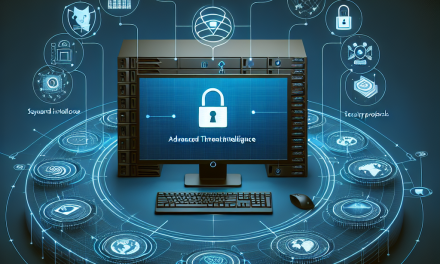Introduction
In today’s digital landscape, the security of Active Directory (AD) has never been more critical. With the increasing sophistication of cyber threats, organizations must implement robust security measures to protect sensitive data and maintain compliance. One effective strategy is the use of audit trails combined with enhanced monitoring techniques. This article explores how these approaches can bolster your Active Directory security posture.
Understanding Active Directory Security
Active Directory is a crucial component of Windows Server that serves as a directory service for managing domain networks. It stores information about network resources, such as users, computers, and services, allowing administrators to manage permissions and access rights efficiently. However, due to its central role, AD is often a primary target for cybercriminals.
To safeguard AD, organizations must prioritize security measures, particularly around monitoring and auditing practices.
The Role of Audit Trails
Audit trails are records that provide a detailed history of events and activities within the AD environment. They are essential for:
- Incident Investigation: Quickly identifying and analyzing potential security incidents.
- Compliance: Meeting regulatory requirements such as GDPR and HIPAA, which mandate strict tracking of user activities.
- Behavior Analysis: Understanding normal user behavior and identifying anomalies that could indicate malicious activity.
Key Audit Trail Features
- Comprehensive Logging: Ensure all significant events are logged, including user authentications, group memberships, and permission changes.
- TimeStamps: Each log entry should include accurate timestamps to help trace actions back to specific events.
- User Identification: Record the identity of users performing actions, which is crucial for accountability.
- Change Tracking: Monitor changes to critical objects, such as OU structures, policy alterations, and user settings, to ensure that only approved modifications are made.
Enhanced Monitoring Techniques
While audit trails are vital, they are not sufficient on their own. Enhanced monitoring techniques can provide a more proactive security posture. Here are several effective strategies:
1. Real-Time Alerts
Implement systems that provide real-time notifications for critical events, such as:
- Unauthorized access attempts
- Changes to administrative privileges
- Logins from unusual locations or IP addresses
These alerts can help administrators respond swiftly to potential breaches.
2. SIEM Solutions
Security Information and Event Management (SIEM) tools aggregate log data from various sources, including AD, and analyze it for threats. By using SIEM, organizations can:
- Detect patterns of suspicious activity.
- Correlate events across different systems for comprehensive threat analysis.
- Generate detailed reports for compliance and forensic analysis.
3. User and Entity Behavior Analytics (UEBA)
UEBA tools utilize machine learning to establish a baseline of normal user behavior within AD. They can identify deviations that may indicate security threats or insider threats by analyzing factors such as:
- Login times
- Frequency of access to resources
- Changes in user behavior patterns over time
4. Multi-Factor Authentication (MFA)
Implementing MFA adds an additional layer of security, making it significantly harder for unauthorized users to gain access to AD, even if they compromise a user’s credentials. MFA can be applied to all administrative functions and sensitive data access.
5. Regular Security Audits
Conduct regular audits of AD configurations and security settings. This proactive approach can help identify vulnerabilities or misconfigurations that could be exploited by attackers.
Best Practices for Implementing Enhanced Monitoring
- Establish a Security Policy: Define clear policies for monitoring and auditing AD that align with organizational goals.
- Integrate Tools: Choose monitoring tools that can integrate seamlessly with AD for comprehensive visibility.
- Train Staff: Ensure that IT and security teams are well-trained in monitoring techniques and can respond effectively to alerts.
- Review and Update Regularly: Regularly review monitoring configurations and policies to adapt to evolving threat landscapes.
Conclusion
As organizations continue to embrace digital transformation, the security of Active Directory becomes even more paramount. By leveraging audit trails and implementing enhanced monitoring techniques, businesses can significantly bolster their defenses against cyber threats. Investing in these practices not only strengthens security but also fosters trust and compliance in an increasingly complex regulatory environment.
For IT administrators and security professionals, adopting these strategies will pave the way for a more secure and resilient Active Directory infrastructure.





